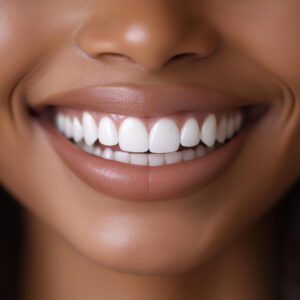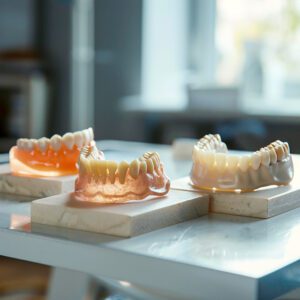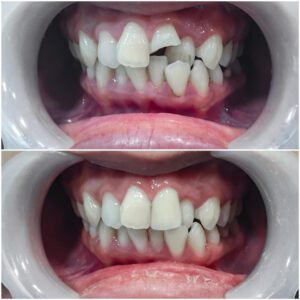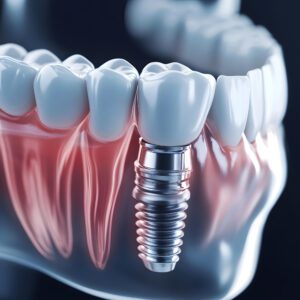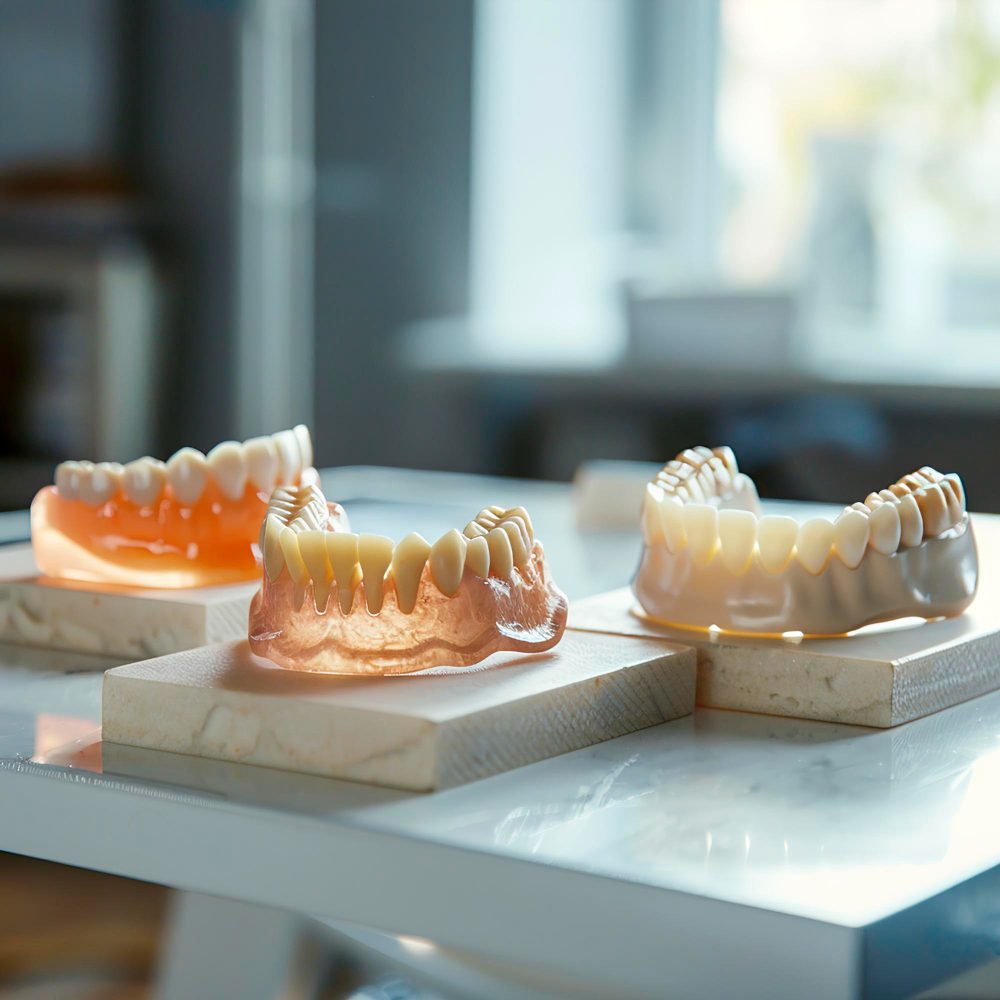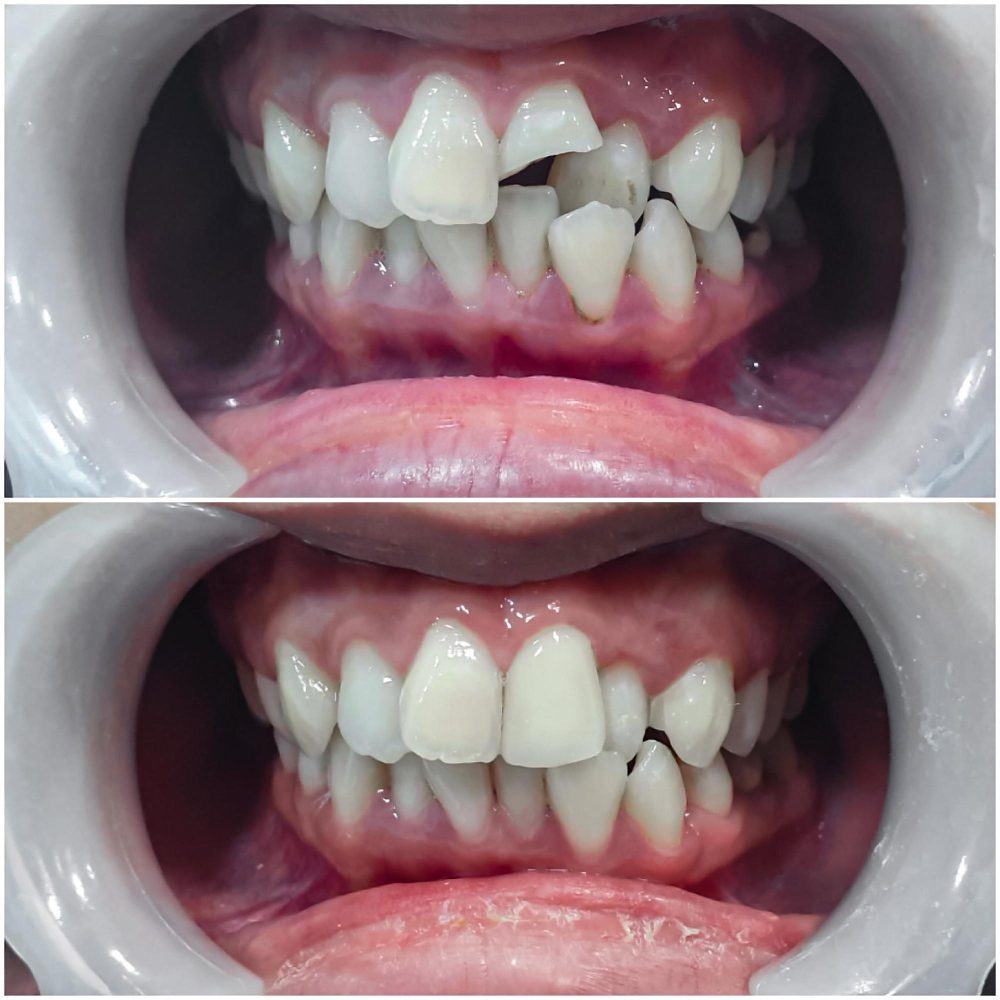Introduction to Baby Teeth Eruption
The eruption of baby teeth is a pivotal aspect of early childhood development. Also known as primary or deciduous teeth, these initial set of teeth typically begins to emerge around the age of six months, although variations in timing are common. Understanding the process of baby teeth eruption is crucial for parents and caregivers, as it directly impacts a child’s health and well-being. This significant developmental stage lays the foundation for a child’s future oral health.
Baby teeth serve several vital functions that contribute to overall dental health. Initially, they enable infants to chew solid foods, which is essential for nutrition and physical development. Additionally, baby teeth play a critical role in speech development, as they help in forming sounds and words. Beyond these immediate benefits, the presence of healthy primary teeth is necessary for maintaining proper spacing in the mouth, ensuring that permanent teeth can erupt correctly in alignment.
The timeline and symptoms associated with baby teeth eruption can vary widely among infants. Some may experience discomfort or pain during this teething process, which can manifest in various ways, including irritability or changes in eating habits. By being informed about the typical eruption schedule and recognizing the signs associated with this process, caregivers can provide much-needed support and comfort during this transitional phase of their child’s growth.
Overall, a comprehensive understanding of baby teeth eruption equips parents with the knowledge to address any concerns that may arise. By recognizing the importance of these early teeth, caregivers can better appreciate the role they play in a child’s development and dental health. It is essential to foster an environment that promotes healthy dental habits from an early age, setting the stage for a lifetime of oral health.
Timeline of Baby Teeth Eruption
The eruption of baby teeth, also known as primary teeth, typically follows a general timeline, although individual variations are common. Most infants begin to experience the eruption of their first teeth around six months of age. The lower central incisors usually emerge first, followed by the upper central incisors, which typically come in between eight to twelve months. Following this, the lateral incisors appear, usually between nine to thirteen months for the upper teeth and ten to sixteen months for the lower teeth.
As the child grows, molars begin to erupt. The first set of molars generally appears between thirteen to nineteen months for the lower molars and between sixteen to twenty-two months for the upper molars. By the time the child is around two to three years old, they will have a complete set of twenty primary teeth. This timeline serves as a guideline, and it is important to recognize that there can be deviations based on various factors.
Several factors can influence the timing of baby teeth eruption, including genetics, nutrition, and overall health. For instance, children with family members who experienced early or late teething may exhibit similar patterns. Additionally, children who receive adequate nutrition are likely to experience timely tooth eruption, while those with poor dietary habits may face delays.
While the above timeline presents a common pattern, it is essential to acknowledge that each child is unique. Some may begin teething earlier, while others might not showcase signs of eruption until they reach their first birthday. Parents should monitor their child’s development and consult a pediatric dentist if they have any concerns regarding their child’s tooth eruption timeline.
Common Symptoms During Teething
Teething is a significant developmental milestone for infants, typically occurring between six months and two years of age. Parents often find themselves seeking ways to alleviate their baby’s discomfort during this period. Recognizing the common symptoms associated with teething can help caregivers respond effectively to their child’s needs. One of the most notable signs of teething is swollen gums. As the teeth begin to emerge, the gums may appear red and inflamed, indicating the pressure and movement of the teeth beneath the surface.
Another frequent symptom is increased drooling. This excessive saliva production is a natural response to oral discomfort and can lead to skin irritation around the baby’s mouth and chin if not managed properly. It is important for parents to keep the area dry and apply protective creams if necessary. Additionally, irritability is commonly observed in babies who are teething. The discomfort caused by the emergence of new teeth can make infants fussy and less tolerant of their regular surroundings. Caregivers should expect mood swings and seek to provide comfort through soothing techniques.
Changes in sleep patterns can also signal teething. Many infants who are usually good sleepers may become restless or wake frequently during the night. This disruption is often linked to the pain and discomfort they experience. Parents should create a soothing bedtime routine to help their baby settle down and seek professional advice if sleep disturbances persist. Understanding these symptoms is vital, as it allows caregivers to better manage teething discomfort through appropriate intervention. Moreover, recognizing these signs early can enhance the well-being of the child during this challenging developmental phase.
Effective Pain Relief Strategies for Teething
Teething can be a distressing experience for both infants and their parents. Understanding the various pain relief strategies available can significantly alleviate discomfort associated with this natural process. Many parents turn to home remedies, which are often effective and require minimal intervention. One popular method is the use of cold teething rings. These rings can be chilled in the refrigerator and given to the baby to chew on, providing soothing relief to sore gums. The cold temperature numbs sensations in the gums and helps reduce swelling.
Another effective approach is to gently massage the baby’s gums. Parents can use a clean finger to apply gentle pressure to the affected areas, which can help provide temporary relief. Additionally, some natural remedies include offering chilled fruit or vegetable slices for infants who are old enough to handle solids. These not only soothe the gums but also introduce healthy snacks into their diet.
For parents seeking pharmaceutical options, several over-the-counter medications can be beneficial. Acetaminophen is commonly recommended to manage teething pain, but it is essential to consult a pediatrician before administering any medication to ensure the correct dosage and suitability for the infant’s age and health condition. Another alternative is the use of teething gels, though these should be used with caution and only under the guidance of a healthcare professional.
It is crucial to monitor the baby’s progress and behavior during this time. Parents should consult a pediatrician if the baby experiences severe pain, high fever, or prolonged crying, as these may indicate other underlying issues. By employing various pain relief strategies—both home remedies and appropriate medications—parents can help ease the teething process, ensuring a more comfortable experience for their child.
When to Seek Professional Help
Teething is a developmental phase that can often lead to discomfort and a variety of symptoms in infants. While these symptoms can be relatively mild, there are specific situations when it becomes essential for parents to seek professional medical advice. Understanding the distinction between normal teething discomfort and symptoms indicative of potential complications is crucial for the well-being of the child.
If your child experiences a prolonged fever exceeding 101 degrees Fahrenheit, it is advisable to consult a healthcare provider. While teething can sometimes cause a slight increase in temperature, a high fever that persists can be a sign of underlying infections or other medical issues unrelated to teething. Similarly, persistent diarrhea is another red flag; while mild digestive upset can occur during teething, severe or watery diarrhea may suggest an illness requiring professional attention.
Additionally, if teething causes a significant alteration in feeding habits—for instance, if your child refuses to eat or drink for more than a day—this may warrant a consultation. Hydration is critical, and a lack of food and fluids could lead to further health complications.
Parents should also be vigilant for excessive irritability or inconsolable crying that lasts beyond the typical teething symptoms. While some fussiness is expected, behavior that deviates significantly from your child’s norm could indicate discomfort from sources other than teething.
Finally, if you observe any unusual rashes, swelling, or other symptoms that seem out of place, seeking the advice of a healthcare professional is recommended. Such signs may not be merely a result of teething but could point to allergies, infections, or other medical concerns that require intervention. Maintain open communication with your pediatrician about any health changes you notice during this phase.
Teething Myths vs. Facts
Teething is a natural process that every child experiences, yet it is often surrounded by a variety of myths and misconceptions. These misunderstandings can lead to unnecessary anxiety for parents, making it imperative to differentiate between fact and fiction. One common myth is that teething causes high fevers in infants. However, research indicates that while teething can lead to minor temperature increases, it does not cause fever over 100.4°F (38°C). If a child experiences a high fever, parents should consult a healthcare professional, as it is likely indicative of an illness unrelated to teething.
Another prevalent misconception is that teething can result in significant gastrointestinal symptoms, such as diarrhea or vomiting. Studies suggest that while some infants may experience mild changes in bowel movements, severe gastrointestinal issues are not typically linked to the teething process. Parents should be mindful of other causes if their child exhibits these symptoms and seek medical advice if necessary.
Additionally, some believe that teething rings containing liquid pose a risk if they break. However, reputable teething products are tested for safety and designed to withstand typical use. Rather than avoiding these products, parents should ensure they choose high-quality options that comply with safety standards.
Furthermore, many assume that the pain associated with teething is unbearable for infants, leading to extreme discomfort. While teething can cause irritability and restlessness, the level of pain varies among children. Some may show minimal signs of distress, while others may require gentle pain relief methods. Parents are encouraged to observe their child’s reactions and implement soothing techniques as needed.
Understanding these myths and facts can alleviate uncertainty during the teething phase. By relying on scientific evidence and pediatric guidance, parents can navigate this developmental stage with confidence.
FAQs About Baby Teeth Eruption
Teething is a significant milestone in your baby’s development, prompting numerous questions among parents. Understanding baby teeth eruption can alleviate concerns and help caregivers provide appropriate support as their child navigates this phase.
One of the most common questions is, “How long does the teething process last?” Generally, teething begins around six months of age and can continue until the child is about two to three years old. However, the timing can vary widely, with some infants showing signs earlier or later than others. Each baby experiences this process uniquely, so parents should remain attentive to their child’s individual timeline.
Another frequent inquiry pertains to the symptoms associated with teething. Many babies exhibit discomfort, which can manifest as increased drooling, irritability, or a tendency to chew on objects. Some parents also report behavioral changes, including sleep disturbances. It’s essential to recognize that these symptoms can vary; not all babies experience significant discomfort during this time.
In terms of caring for baby teeth, many parents wonder about appropriate oral hygiene. Even before the first tooth erupts, it is advisable to clean the baby’s gums with a soft, damp cloth after feeding. Once teeth emerge, using a small, soft-bristled toothbrush with water is recommended. Fluoride toothpaste should only be introduced when the child is old enough to understand not to swallow it, usually around age two.
Lastly, parents often ask what to expect after the teeth have erupted. The initial teeth may be a little uneven or may not follow a precise order, but this is normal. As the child grows, further dental care habits can be established, paving the way for healthy oral hygiene practices through their development.
Caring for Baby Teeth: Dental Hygiene Tips
Dental hygiene is a crucial aspect of caring for your child’s health, especially during the early years when baby teeth erupt. Establishing a routine from an early age can significantly contribute to the long-term health of their permanent teeth. For newborns, it is essential to clean their gums even before the arrival of the first tooth. Gently wiping the gums with a damp washcloth or a soft, infant toothbrush will help remove any residual milk and establish healthy oral hygiene habits.
Once the first baby tooth appears, typically around six months of age, it is important to start brushing. A soft-bristled toothbrush with a small head designed specifically for infants can be utilized. It is advisable to use a minimal amount (about the size of a grain of rice) of fluoride toothpaste. Fluoride is known for its ability to strengthen enamel and prevent cavities, though too much fluoride can be harmful. Therefore, parental supervision during brushing is important until the child can manage it on their own, usually around the age of three.
Regular dental check-ups should commence once your child’s first tooth emerges or by their first birthday, whichever comes first. These visits allow the dentist to monitor tooth development, provide professional cleaning, and offer personalized advice on maintaining oral hygiene. As the child grows, it is essential to transition toward proper brushing techniques. Encourage them to brush their teeth twice a day and instill the importance of brushing for at least two minutes. Flossing should commence when two teeth touch, further emphasizing the significance of comprehensive dental hygiene.
Ultimately, fostering good dental hygiene practices from a young age plays a vital role in promoting overall oral health and preventing potential dental issues as children grow older. By engaging in consistent oral care and seeking regular professional evaluations, parents can help establish a lifetime of healthy smiles for their children.
Conclusion: Navigating the Teething Journey
The teething process represents a significant milestone in a child’s development, typically occurring between five months and three years of age. Understanding the symptoms associated with baby teeth eruption is crucial for parents. As teeth push through the gums, infants may experience various signs such as increased drooling, irritability, and a desire to chew on objects. Recognizing these indicators can help caregivers anticipate discomfort and take proactive steps to alleviate pain.
During this phase, it is essential for parents to remain patient and supportive. While teething can undoubtedly be uncomfortable for babies, it is important to remember that each child’s experience is distinct. The timing, symptoms, and degree of discomfort can vary widely from one infant to another. Having realistic expectations about the duration of teething can ease some of the stress parents may feel during this transitional period.
There are various methods to ease a teething baby’s discomfort, ranging from teething rings to gentle massages on the gums. Monitoring your child’s reactions and adjusting your approach based on their needs can be beneficial. If symptoms seem severe or persist beyond typical teething times, consulting a pediatrician can provide guidance tailored to your child’s specific situation.
In closing, navigating the teething journey requires a blend of patience, understanding, and proactive care. By being attentive to the signs of discomfort and experimenting with different relief methods, parents can help ease the challenges of teething for their little ones. Ultimately, this phase is a transient part of overall development, leading to the emergence of healthy baby teeth that will shape your child’s future dental health.



